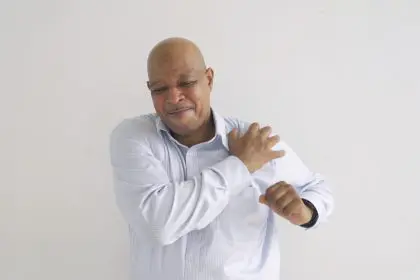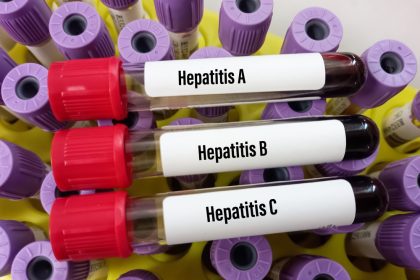That familiar symphony of pops, cracks, and creaks emanating from your joints wasn’t nearly as prominent in your twenties as it is now. Whether it’s your knees announcing your arrival when you stand up from a chair, your back creating a percussion section when you stretch in the morning, or your fingers providing a staccato rhythm when you flex them, joint cracking becomes an increasingly common soundtrack to daily life as the years accumulate.
The phenomenon of increased joint cracking with age isn’t just your imagination – it’s a real biological process rooted in the natural changes that occur throughout your musculoskeletal system over time. Understanding why this happens can help demystify those sounds and provide insight into what’s actually occurring inside your body as it ages.
The changing landscape of cartilage
- Cartilage deterioration: The smooth, rubbery tissue that cushions your joints begins to thin and lose its elasticity with age, creating more friction between bones.
- Surface roughening: Once-smooth cartilage develops microscopic irregularities that can cause catching and popping sensations during movement.
- Reduced shock absorption: Thinning cartilage provides less cushioning, allowing bones to come into closer contact and create more audible interactions.
- Uneven wear patterns: Decades of use create areas where cartilage wears down more than others, leading to irregular joint surfaces.
- Decreased regenerative capacity: Your body’s ability to repair and maintain cartilage tissue diminishes significantly with age.
The cartilage in your joints serves as a crucial buffer between bones, allowing for smooth, pain-free movement. In younger years, this tissue remains thick, smooth, and well-hydrated, providing excellent shock absorption and lubrication. However, the aging process gradually transforms this once-pristine surface into something more akin to a well-worn pathway.
As cartilage begins to deteriorate, it loses its ability to maintain the perfect spacing between bones. The tissue becomes thinner, drier, and less flexible, which means bones can move closer together during joint movement. This proximity increase creates more opportunities for the audible phenomena we associate with joint cracking.
The deterioration process doesn’t happen uniformly across all joints or even within individual joints. Some areas may experience more wear than others, creating an uneven landscape that can catch or stick during movement before suddenly releasing – producing the characteristic popping sound.
Synovial fluid changes and gas bubble formation
Your joints contain a remarkable lubricating substance called synovial fluid, which serves multiple functions including nourishing cartilage, reducing friction, and maintaining joint health. This fluid undergoes significant changes as you age, directly contributing to increased joint cracking.
Young, healthy synovial fluid has an optimal consistency and chemical composition that allows for smooth joint movement. It contains the perfect balance of water, proteins, and other compounds that create an ideal lubricating environment. However, aging affects both the quantity and quality of this crucial fluid.
The aging process typically reduces the amount of synovial fluid present in joints, leading to less effective lubrication between moving parts. Additionally, the fluid’s consistency changes, becoming less viscous and losing some of its protective properties. These changes mean that joints don’t glide as smoothly past each other as they once did.
One of the most interesting aspects of joint cracking involves the formation and collapse of gas bubbles within synovial fluid. This fluid naturally contains dissolved gases, primarily nitrogen and carbon dioxide. When joints move in certain ways, particularly during stretching or sudden movements, the pressure within the joint space can change rapidly.
These pressure changes can cause dissolved gases to form tiny bubbles within the synovial fluid – a process similar to opening a carbonated beverage. When these bubbles suddenly collapse or burst, they create the characteristic popping sound associated with joint cracking. As synovial fluid composition changes with age, this bubble formation and collapse process can become more frequent and pronounced.
Ligament and tendon modifications
The connective tissues that hold your joints together – ligaments and tendons – undergo their own aging process that contributes to increased joint noise. These structures, which were once taut and elastic, gradually lose their flexibility and strength over time.
Ligaments, which connect bone to bone, become less elastic and may develop areas of stiffness or irregularity. This reduced flexibility means they don’t stretch and contract as smoothly as they once did, potentially creating catching or snapping sensations during joint movement.
Tendons, which connect muscles to bones, also experience age-related changes that can contribute to joint cracking. They may develop small tears or areas of thickening that can cause them to catch or snap over bony prominences during movement. These interactions between tendons and bones can create audible sounds, particularly in joints like the knee, shoulder, and hip.
The overall tightening of connective tissues with age means that joints may not move through their full range of motion as easily as they once did. When these tighter structures are suddenly stretched or moved, they may produce more pronounced cracking sounds as they release tension.
Bone density and structural changes
The bones themselves undergo changes that can contribute to increased joint cracking. Bone density typically decreases with age, and the surface of bones may develop irregularities or small spurs that weren’t present in younger years.
These bony changes can alter the way joint surfaces interact with each other. Where once there were smooth, perfectly matched surfaces, there may now be slight irregularities that can catch or stick during movement before suddenly releasing. This catching and releasing action often produces the cracking sounds that become more common with age.
Additionally, the spaces between bones may change as supporting structures weaken or shift. This can create new pathways for sound transmission and new opportunities for the mechanical interactions that produce joint cracking.
The role of decreased physical activity
Modern lifestyles often involve decreased physical activity as people age, which can contribute to increased joint cracking through several mechanisms. Reduced movement means joints don’t get exercised through their full range of motion as frequently, leading to stiffness and reduced flexibility.
When joints aren’t moved regularly, synovial fluid circulation decreases, potentially leading to changes in fluid composition and quantity. The cartilage also relies on joint movement to maintain its health, as the compression and decompression action helps deliver nutrients and remove waste products.
Muscle weakness that often accompanies reduced activity can also contribute to joint instability. When the muscles surrounding joints become weaker, they provide less support and control during movement, potentially leading to more erratic joint motion and increased cracking sounds.
Hormonal influences on joint health
Age-related hormonal changes, particularly the decline in growth hormone and sex hormones, can significantly impact joint health and contribute to increased cracking. These hormones play crucial roles in maintaining cartilage, bone, and connective tissue health throughout life.
As hormone levels decline with age, the body’s ability to repair and maintain joint structures diminishes. This reduced regenerative capacity means that the normal wear and tear of daily life accumulates more rapidly than the body can repair it, leading to the structural changes that promote joint cracking.
Hormonal changes also affect the production and quality of synovial fluid, potentially altering its lubricating properties and contributing to the mechanical changes that produce joint sounds.
Distinguishing normal aging from pathology
While increased joint cracking is a normal part of aging, it’s important to understand when joint sounds might indicate more serious underlying conditions. Normal age-related joint cracking typically occurs without pain and doesn’t interfere with daily activities.
However, when joint cracking is accompanied by pain, swelling, stiffness, or reduced range of motion, it may indicate the presence of arthritis or other joint conditions that require medical attention. The key distinction lies in whether the cracking is simply a mechanical phenomenon or whether it’s associated with inflammation or structural damage.
Age-related joint cracking often occurs during specific movements or positions and can frequently be reproduced intentionally. It typically doesn’t cause discomfort and may even provide a temporary sense of relief or increased mobility.
Maintaining joint health through the aging process
Understanding why joints crack more with age can help inform strategies for maintaining joint health throughout life. Regular physical activity remains one of the most effective ways to preserve joint function and minimize age-related changes.
Exercise helps maintain synovial fluid production and circulation, keeps cartilage healthy through regular compression and decompression, and maintains the strength and flexibility of surrounding muscles and connective tissues. Activities that promote joint mobility, such as swimming, yoga, or tai chi, can be particularly beneficial for maintaining joint health.
Proper nutrition also plays a role in joint health, as the body requires adequate nutrients to maintain and repair joint structures. Staying hydrated helps maintain synovial fluid production, while adequate protein intake supports the maintenance of cartilage and connective tissues.
The increased joint cracking that comes with age represents a natural consequence of the aging process rather than necessarily indicating disease or dysfunction. While these sounds may be more noticeable and frequent than in younger years, they often represent normal adaptations to the structural and functional changes that occur throughout the musculoskeletal system over time. Understanding these changes can help people age more gracefully while taking appropriate steps to maintain joint health and function throughout their lives.

















